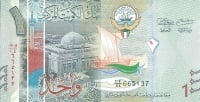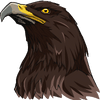| National Factbook |
| Flag: |

|
| Nation Name: |
Kuwait |
| Leader Name: |
Al-Sabah |
| Currency: |

KWD |
| National Animal: |

Golden eagle |
| History: |
### **History of Kuwait**
#### **Early History & Founding (Pre-18th Century)**
The area now known as Kuwait was historically inhabited by nomadic Arab tribes. It was part of various regional empires, including the **Dilmun Civilization** (Bahrain-based, around 2000 BCE), followed by Persian, Greek, and later Arab influences. The region served as a trade and fishing hub, with connections to Mesopotamia and India.
#### **Establishment of Kuwait (18th Century)**
In the early 18th century, the **Bani Utub tribe** migrated from central Arabia and settled in what became Kuwait. By **1752**, the Al Sabah family established control, with **Sheikh Sabah I bin Jaber** becoming the first ruler. The settlement flourished due to its strategic location for maritime trade between India, Arabia, and Persia.
#### **British Protection & Economic Growth (19th Century – Early 20th Century)**
By the **19th century**, Kuwait was a key trading post for pearls, spices, and textiles. However, as the **Ottoman Empire** sought greater control, Sheikh Mubarak Al-Sabah (1896–1915) signed an agreement with **Britain in 1899**, making Kuwait a **British protectorate** in exchange for military and political protection. This secured Kuwait from Ottoman annexation but limited its independence.
#### **Oil Discovery & Modernization (1930s – 1950s)**
The discovery of **oil in 1938** transformed Kuwait from a small trading port into a wealthy nation. By **1946**, the first commercial oil shipment was exported, leading to rapid modernization. The government used oil revenues to build infrastructure, healthcare, and education, making Kuwait one of the most developed countries in the Middle East.
#### **Independence & Political Development (1961–1990)**
Kuwait gained **full independence from Britain on June 19, 1961**. The first **parliamentary elections** were held in 1963, making Kuwait the first Gulf country with an elected legislature. Throughout the 1970s and 1980s, it remained a regional financial hub, but political tensions arose, including the Iran-Iraq War (1980–1988), during which Kuwait supported Iraq.
#### **Iraq’s Invasion & Liberation (1990–1991)**
On **August 2, 1990**, Saddam Hussein’s **Iraq invaded Kuwait**, claiming it as Iraq’s 19th province. The invasion led to international condemnation, and by **February 1991**, a U.S.-led coalition under **Operation Desert Storm** liberated Kuwait in just **seven months**. The retreating Iraqi forces set **hundreds of oil wells on fire**, causing massive environmental damage.
#### **Post-War Reconstruction & Modern Kuwait (1991–Present)**
After liberation, Kuwait focused on rebuilding its economy and infrastructure. The 2000s saw increased political participation, including the **introduction of women’s suffrage in 2005**. Kuwait has remained a key player in regional politics, maintaining strong ties with the **GCC, U.S., and Western allies**. Today, it remains one of the richest countries per capita, with a **strong welfare state, free healthcare, and education**, and an influential **sovereign wealth fund**. |
| Geography |
| Continent: |
Australia |
| Land Area: |
137,276.70 sq. km |
| Terrain: |
### **Terrain of Kuwait**
Kuwait is a small country located on the **northeastern edge of the Arabian Peninsula**, bordered by **Iraq to the north and west, Saudi Arabia to the south, and the Arabian Gulf to the east**. The country’s **landscape is mostly flat and arid**, characterized by **desert plains, sandy dunes, and a long coastline**.
#### **1. General Landscape**
- **Flat Desert Terrain:** Kuwait is predominantly a **low-lying desert**, with elevations rarely exceeding **300 meters (984 feet)**. The land is mostly **barren**, with little vegetation except for some desert shrubs and grasses.
- **Al-Dibdibah Plain:** A large gravel desert in the western and northern regions, part of the greater Arabian Desert.
- **Coastal Region:** The **eastern coastline** along the **Arabian Gulf** features **mudflats, salt marshes, and sandy beaches**.
#### **2. Key Geographic Features**
- **Bay of Kuwait:** A **deep natural harbor** that has historically been vital for trade and fishing. Kuwait City is built along its shores.
- **Bubiyan Island:** Kuwait’s **largest island**, located in the northeast, is mostly uninhabited and used for military purposes.
- **Failaka Island:** An important historical island with ruins dating back to **Ancient Mesopotamian civilizations** (Dilmun period).
#### **3. Climate & Natural Challenges**
- **Desert Climate:** Kuwait experiences **scorching summers (up to 50°C/122°F)** and mild winters.
- **Sandstorms:** Common in the spring and summer due to strong northwesterly winds.
- **Limited Freshwater Sources:** Kuwait has no **permanent rivers or lakes**, relying on **desalination plants** for drinking water.
Despite its harsh desert environment, Kuwait has developed an advanced infrastructure, using **artificial irrigation** and urban planning to sustain its growing population. |
| Highest Peak: |
,
300 meters
|
| Lowest Valley: |
,
0 meters
|
| Climate: |
### **Climate of Kuwait**
Kuwait has a **hot desert climate (BWh – Köppen climate classification)**, characterized by **extremely hot summers, mild winters, and very little rainfall**. The weather is influenced by its location in the **Arabian Desert**, resulting in **dry conditions, strong winds, and frequent dust storms**.
#### **1. Seasons & Temperature**
- **Summer (May – September)**
- Extremely hot and dry, with temperatures often exceeding **50°C (122°F)** in July and August.
- **Humidity is low**, but coastal areas can feel more humid due to the Arabian Gulf.
- **Heatwaves are common**, making Kuwait one of the hottest countries in the world.
- **Winter (December – February)**
- Mild temperatures ranging from **8°C to 20°C (46°F – 68°F)**.
- Occasional **rainfall**, though total annual precipitation is **only 75-150 mm (3-6 inches)**.
- **Cold desert nights**, sometimes dropping close to **0°C (32°F)** in the desert.
- **Spring (March – April) & Autumn (October – November)**
- **Pleasant temperatures** (15°C – 30°C / 59°F – 86°F).
- More comfortable weather before and after the intense summer heat.
#### **2. Weather Phenomena**
- **Sandstorms & Dust Storms:**
- Strong **northwesterly winds (Shamal winds)** bring frequent dust storms, especially from **March to August**.
- These storms reduce visibility and impact daily life.
- **Rainfall & Thunderstorms:**
- Kuwait has **low and unpredictable rainfall**, mostly occurring in **winter and early spring**.
- Occasional **heavy downpours** can lead to **flash flooding** due to poor drainage in urban areas.
- **Extreme Heat & Drought:**
- Summers are **extremely dry**, with no significant rainfall.
- Kuwait often experiences **prolonged droughts**, making it reliant on **desalination for freshwater**.
### **3. Climate Challenges**
- **Water Scarcity:** Kuwait has no rivers and depends on **desalination and underground aquifers**.
- **Urban Heat Effect:** Rising temperatures in Kuwait City due to rapid urbanization.
- **Climate Change Impact:** Rising temperatures, increasing dust storms, and extreme weather events.
Despite its harsh climate, Kuwait has adapted through **modern infrastructure, air-conditioned urban spaces, and water desalination projects**. |
| People & Society |
| Population: |
8,332,973 people |
| Demonym: |
Kuwaiti |
| Demonym Plural: |
Kuwaitis |
| Ethnic Groups: |
Arab Kuwaitis - 80.0%
Persian Kuwaitis - 20.0% |
| Languages: |
Arabic - 75.0%
English - 85.0% |
| Religions: |
Sunni Islam - 80.0%
Shia Islam - 20.0% |
| Health |
| Life Expectancy: |
78 years |
| Obesity: |
40% |
| Alcohol Users: |
0% |
| Tobacco Users: |
25% |
| Cannabis Users: |
0% |
| Hard Drug Users: |
0% |
| Economy |
| Description: |
|
| Average Yearly Income: |
$156.08 |
| Gross Domestic Product (GDP): |
$15,827,253,480.00 |
| GDP per Capita: |
$1,899.35 |
| Gross National Income (GNI): |
$58,050,521,625.00 |
| Industries: |
|
| Military |
| History: |
|
| Soldiers: |
0 |
| Tanks: |
12,500 |
| Aircraft: |
1,875 |
| Ships: |
0 |
| Missiles: |
20 |
| Nuclear Weapons: |
0 |
| Last Updated: 02/26/2025 03:21 pm |














